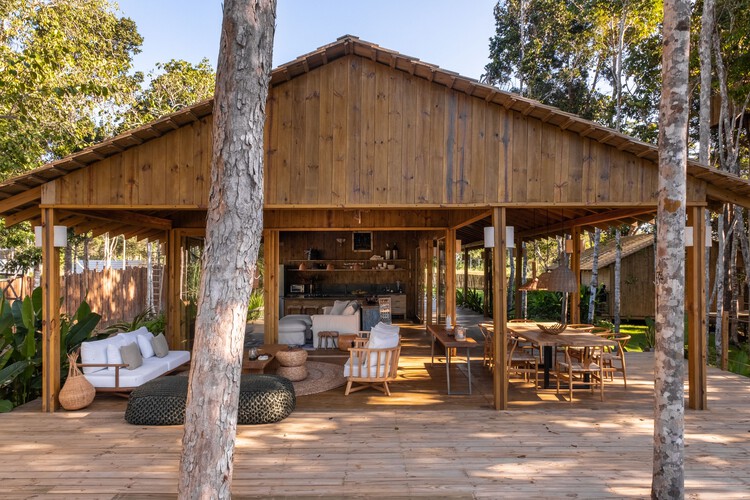Housing Revolution: innovative and sustainable solutions for living space
The issue of housing is a crucial element in everyone’s life. In a constantly evolving world, characterized by changing needs and priorities, the concept of dwelling is undergoing an unprecedented revolution. The growing environmental awareness, the challenges of modern cities, and the search for more flexible lifestyles are pushing designers to explore new housing solutions, capable of challenging traditional models. This article explores innovative and sustainable pathways to meet current housing needs.
Modular Homes

PH TO OKA FOTOGRAFIA
Modular homes represent an intriguing trend in the residential construction sector. They are prefabricated structures that offer unprecedented flexibility, allowing occupants to customize and modify interior spaces according to their needs. This innovation not only offers flexibility in interior layout but also promotes energy efficiency and sustainability using high-performance and eco-friendly materials. A significant example is the Mata Modular House project in Brazil, which focuses on the use of wooden modules that can be assembled with local techniques, ensuring rapid and easy assembly.
Recycled Containers

PH METTHEW CARBONE
The use of abandoned shipping containers to create homes is a successful experiment in sustainable building. This ecological solution allows for the repurposing of discarded containers, creating sturdy, affordable, and eco-friendly dwellings. An example is the Amagansett Modular House by MB Architecture, which uses four internally clad containers to create a unique and attractive design, reducing costs and construction time.
Vertical Houses

PH Toshihiro SOBAJIMA
In cities where space is limited, vertical houses represent a smart housing revolution solution to maximize the use of urban space. These dwellings, characterized by innovative design, allow maintaining an urban lifestyle without compromising the quality of living. Examples of this approach are the ‘Skinny houses’ in Japan, such as the 1.8m Width House, which uses split-level floors to optimize internal space.
Community-Based Co-Living

Community-based co-living promotes social interaction among residents who share common interests and lifestyles, contributing to a more satisfying life. A relevant example is the CoHousing at Borgo Rossini in Turin, Italy, which provides shared spaces such as kitchens and gardens, fostering social integration and using contemporary materials for rapid construction.
Tiny Homes

The growing environmental awareness has led to the popularity of tiny homes, small moving dwellings with high energy efficiency that offer a sustainable alternative to traditional housing. An example is the U-Build houses, composed of adaptable modular wooden systems that allow for transformation from a tiny house for a couple to a three-room residence, offering flexibility and mobility.
In conclusion, innovative housing solutions are redefining the very concept of living space. There are many innovative options for addressing contemporary housing challenges, and as we look to the future, it is clear that the relentless drive of innovation will continue to shape the housing sector in surprising and sustainable ways, influencing our concept of home.

